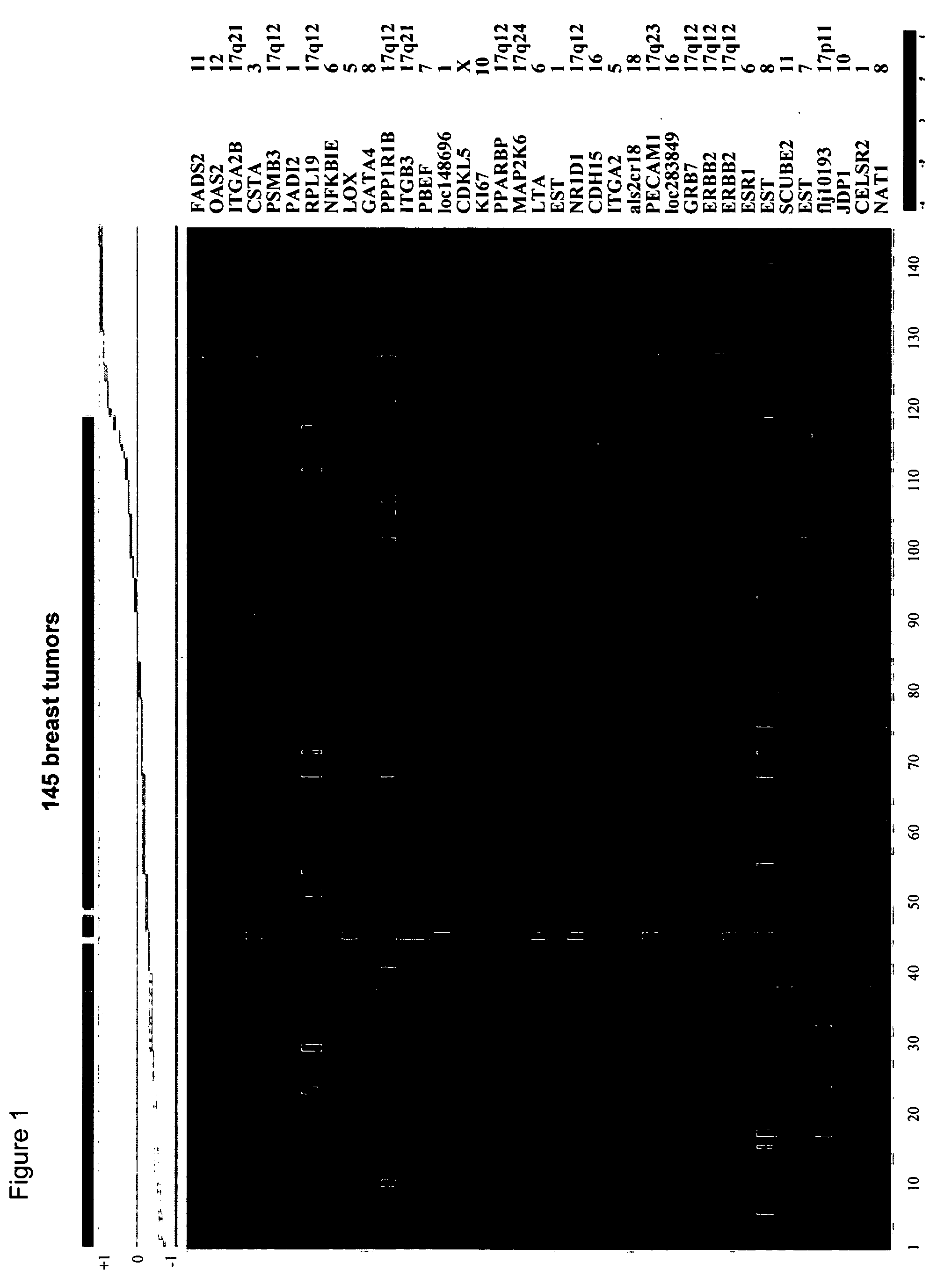Identification of an ERBB2 gene expression signature in breast cancers
a technology of erbb2 and gene expression, applied in the field of polynucleotide analysis, can solve the problems of unexpected variation, difficult implementation, and controversial modification of chemotherapy and hormonal therapy strategies based on erbb2 status, and achieve the effect of improving the current understanding of the role of erbb2 in mammary oncogenesis
- Summary
- Abstract
- Description
- Claims
- Application Information
AI Technical Summary
Benefits of technology
Problems solved by technology
Method used
Image
Examples
Embodiment Construction
[0028] As used herein, a disease, disorder, e.g., tumor or condition “associated with” an aberrant expression of a nucleic acid refers to a disease, disorder, e.g., tumor or condition in a subject which is caused by, contributed to by, or causative of an aberrant level of expression of a nucleic acid.
[0029] As used herein, the term “subsequence” refers to any part of said polynucleotide sequence that is less than the entire polynucleotide sequence, and which would be also suitable to perform the method of analysis according to the invention. A person skilled in the art can choose the position and length of a subsequence by applying routine experiments. For example, a subsequence of a polynucleotide of the invention can be any contiguous sequence of at least about 10, about 25, about 50, about 100, about 200, about 300, about 400, about 800, or about 1,000 nucleotides. Examples of such subsequences are given in Table 1 below, under the heading “Seq3′” or “Seq5′”.
[0030] The over- or...
PUM
| Property | Measurement | Unit |
|---|---|---|
| fluorescence in situ hybridization | aaaaa | aaaaa |
| length | aaaaa | aaaaa |
| time | aaaaa | aaaaa |
Abstract
Description
Claims
Application Information
 Login to View More
Login to View More - R&D
- Intellectual Property
- Life Sciences
- Materials
- Tech Scout
- Unparalleled Data Quality
- Higher Quality Content
- 60% Fewer Hallucinations
Browse by: Latest US Patents, China's latest patents, Technical Efficacy Thesaurus, Application Domain, Technology Topic, Popular Technical Reports.
© 2025 PatSnap. All rights reserved.Legal|Privacy policy|Modern Slavery Act Transparency Statement|Sitemap|About US| Contact US: help@patsnap.com



